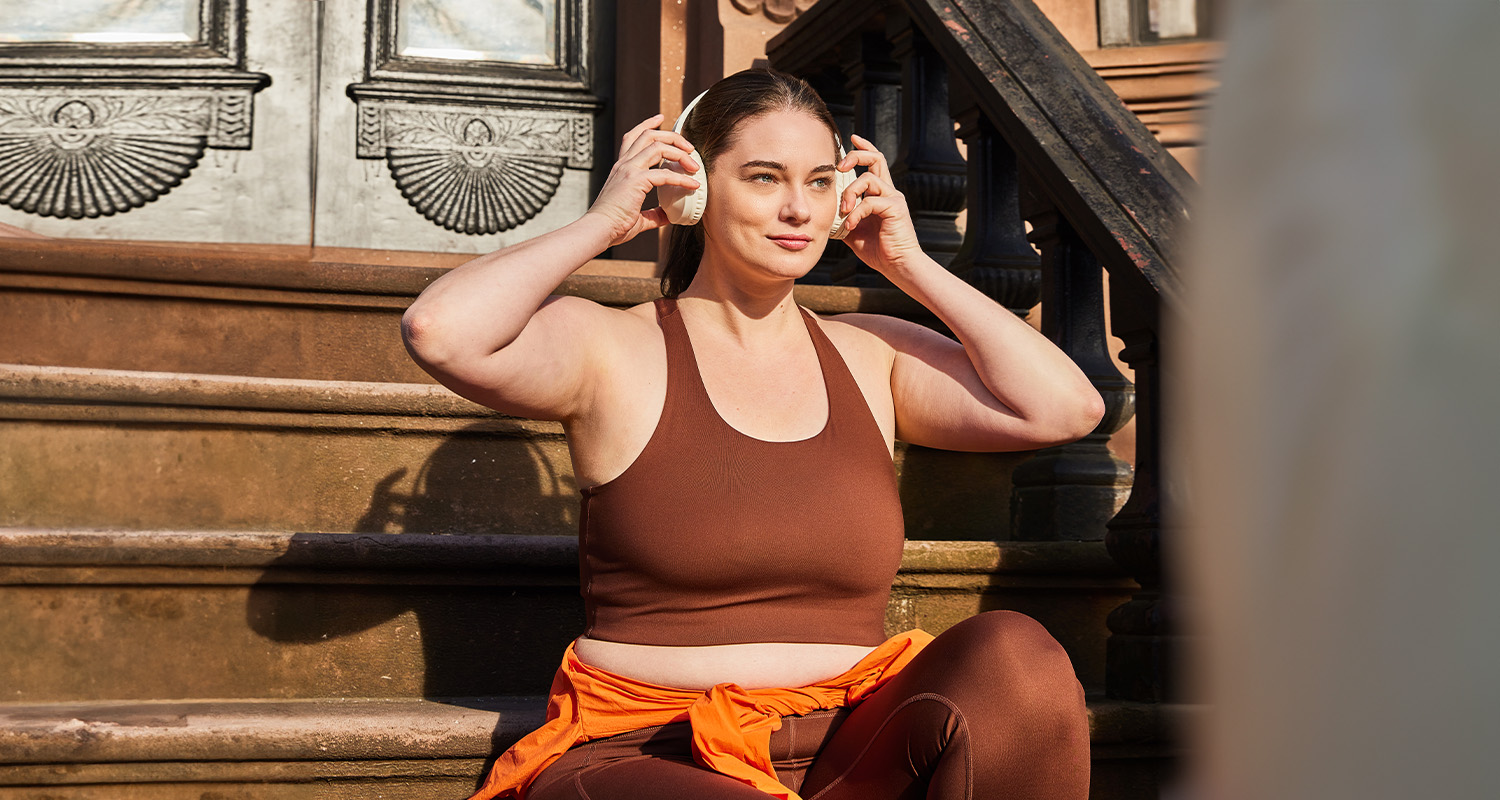- A sedentary lifestyle is when someone lacks significant physical activity.
- A sedentary lifestyle may lead to a higher risk of developing several health conditions, such as heart disease, diabetes and cancer.
- An active lifestyle means that you add in movement throughout the day. Examples include biking to work instead of driving and stretching daily.
Couch potato. Desk jockey. Inactive. There are many terms for a sedentary lifestyle, but they all mean the same thing: a person who spends the majority of their life sitting and lying down and getting very little exercise.
Since our bodies are made to move, making the conscious effort to move more throughout the day improves health in leaps and bounds. Read on to learn about the benefits of a healthy lifestyle and how to add movement into your day.

Effects of a Sedentary Lifestyle
As it stands, more than 60 percent of Americans are living a sedentary lifestyle.[1][2] Not exercising is very bad for the body, so much so that being sedentary has been labeled the “sitting disease.”
Research has established a clear link between inactivity to a person’s increased risk of developing several health conditions[3], including:
- Heart disease
- Obesity
- Diabetes
- Depression
- Anxiety
- High blood pressure
- Premature death
Advancements in technology, such as computers, TVs, mobile devices and video games, may make life easier in many ways. But they have also contributed to our tendency to do nothing.
Studies have found that an increase in being inactive is associated with technological advances.[4] Think of a typical day: if you work in an office, you are likely to sit at a desk for the majority of your time. And then you return home to relax on the couch and binge-watch Netflix or play video games. That is a sedentary lifestyle.

Benefits of an Active Lifestyle
Living an active lifestyle requires mindfulness to incorporate physical activity into your day. Take the stairs at work rather than riding the elevator. Or take a walk during your lunch break rather than sitting down and scrolling through your phone.
It takes sacrifices, but the payoff is so worth it. Here are the benefits of an active lifestyle:
Helps to maintain a healthy weight
Whether you’re looking to shed a few pounds or maintain your weight, an active lifestyle can help. When you combine physical activity (burning calories) with eating a healthy diet, it’s very likely that you will lose weight.
The World Health Organization (WHO) recommends that adults aged 18 to 64 perform 150-300 minutes of moderate-intensity aerobic activity per week, or 75 minutes of vigorous activity, or a combination of both.[5]
Lowers the risk of health conditions
A meta-analysis found that partaking in 22 minutes of moderate to vigorous exercise per day can reduce the risk of premature death.[6]
The meta-analysis, which looked at 196 articles and less than 30 million participants, focused on adults who exercise at least 150 minutes per week, or 22 minutes per day. They compared these results to inactive participants and found that those who exercise for 22 minutes per day had a 31% lower risk of dying.
To reap these benefits, it’s important that you combine the 22 minutes of exercise with other movements throughout the day. Living an active lifestyle doesn’t mean doing a hard workout and then spending the rest of the day sitting down. What you do with those other 23 hours matters in the grand scheme of improving your health.

Reduces stress and anxiety
Exercise really is the best medicine. When it comes to mental health, exercise releases endorphins, brain chemicals that block pain in the body and boost your mood after an intense workout.[7]
Start your morning on the right foot by working out first thing (try one of these activities to fuel your mornings). This is especially helpful during the colder months when seasonal affective disorder (SAD), also known as the winter blues, is most prominent.
There is also evidence that suggests that exercise can help you sleep at night.[8] Just be sure not to do vigorous exercise at least an hour before bed, as this could keep you awake.
Ways to Add Movement into Your Daily Lifestyle
So, you got your workout done for the day. Now what? Keep that momentum going by supplementing it with these various exercises to increase blood flow and improve mental clarity.
Here are some ways to add movement into your daily lifestyle:
Go for a walk after lunch
The benefits of getting outside are many You’ll get vitamin D from the sun, fill your lungs with fresh air and feel more relaxed. When you take a walk shortly after eating, you’ll also experience better digestion and improved blood sugar levels.
In a meta-analysis, researchers looked at the results of seven studies and found that walking after a meal has a positive impact on managing blood sugar levels and preventing type 2 diabetes.[9] You don’t need that long of a walk, either; results were found from strolls as short as two to five minutes.

Try a standing desk
Take a stand for your health by investing in a desk that allows you to stand up comfortably while working. More workers are transforming their workspaces due to the benefits, such as reduced neck and back pain and improved productivity.[10][11]There are several types of standing desks available, such as electric, mechanical and tech adjustable.
Park your car far away so you can walk
It may feel tiresome to walk the few extra steps from your car to your destination, but in the big picture of your health, it’s worth it. Pair this movement with a fitness tracker to keep you motivated to reach your daily step goals.
Do calf raises
Calf raises are a strengthening exercise that you can do practically anywhere. Try some while waiting in line at the grocery store, brushing your teeth or waiting for the copier at work. Stronger calves don’t just look good; they are also exceptionally important as you age. Doing calf raises daily improves your balance and strengthens the muscles of the ankle—two necessary components to prevent falls and reduce injury.
Try these additional ideas to move more throughout the day:
- Put on music as you cook
- Have walking meetings
- Take the stairs instead of the elevator
- Try one of these active outdoor activities
- Pack workout clothes for your vacation
- Use a fitness tracker
- Turn cleaning into a workout
An active lifestyle is key to a long and happy life. Your body is made to move, so spending most of the day stationary raises the risk of several health conditions that contribute to an early death. There are many activities you can do throughout the day to move more and experience the benefits of exercise and mental health. This includes using a standing desk, having meetings outside or walking on your lunch break.
Join the Bulletproof Revolution
Sign up for early access to sales, product launches, the latest Bulletproof news and more!







